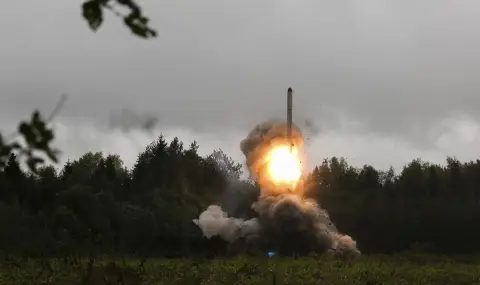On Thursday, February 6, in the morning, during a large-scale air alert in Ukraine, Russia may have launched an "Oreshnik" missile towards Kiev. No explosions were heard. Ukrainian military officer Kirill Sazonov indicates that "Oreshnik" did not fly far - the missile malfunctioned and exploded on Russian territory, writes David Axe for Forbes, reported focus-news.net.
After warning US authorities of its intention, on the morning of November 21, Russia fired a mysterious new ballistic missile - initially mistakenly thought to be a nuclear intercontinental ballistic missile - at the city of Dnipro in eastern Ukraine, damaging buildings and injuring dozens of people.
The mysterious weapon turned out to be a variant of the Russian RS-26 - a 40-ton solid-fuel rocket with six independent launch vehicles. Its name, as Russian President Vladimir Putin announced shortly after the strike, is “Oreshnik“.
Three months later, on Thursday morning, the Russians launched another “Oreshnik“ - this time apparently aimed at Kiev. Air raid sirens blared. The city’s residents sought shelter. But then… nothing. No screams of incoming UAVs. No thunderous booms as the unexploded devices slammed into the ground. According to Kirill Sazonov, a Ukrainian war correspondent, the "Oreshnik" “didn’t fly far“. It reportedly malfunctioned and exploded on Russian soil.
Everyone knew an attack was coming. A week after the first "Oreshnik" strike, Putin threatened to launch more "Oreshniks"—and specifically warned that he would target "decision-making centers" in Kiev, where Ukrainian President Volodymyr Zelensky, senior officials, commanders, and their staffs work.
But the threat was as real as the "Oreshnik" is reliable. While it has not yet been possible to independently confirm the failure of the second Oreshnik in flight, a failure would not be surprising. The Oreshnik is simply a RS-26 with less fuel and therefore a shorter range. The very first test of the RS-26 in 2011 ended in explosive embarrassment, as the prototype rocket veered off course and exploded a few kilometers from the launch pad at the Plesetsk Cosmodrome in northwestern Russia.
The second Oreshnik, which failed, not only spared the people of Kiev and Ukrainian leaders a long, terrifying morning underground, but also turned against the Kremlin. After all, the Oreshnik ICBM-like Oreshnik, with its nuclear associations, is more frightening than militarily effective. Complex and inaccurate, the Oreshnik is an expensive way to “achieve less destruction,“ Jeffrey Lewis, director of the East Asia Nonproliferation Program at the Middlebury Institute of International Studies in Monterey, told Reuters.
In that sense, it is a weapon of terror - a device designed to scare far more people than it injure or kill. That is why Putin followed the first strike on “Oreshnik“ with a media event that launched what The Moscow Times described as “a military propaganda campaign designed to exaggerate the capabilities of the Russian military-industrial complex and the power of the new weapon.“ Putin “should have used [Oreshnik] and then given a press conference and then given another press conference and said, “Hey, this thing is really scary, you should be afraid,” Lewis said. But now that half of the "Oreshnik" missiles may have crashed before reaching their targets, the missiles of terror are certainly becoming less scary with each passing day.
